Bathroom Readers' Institute's Blog, page 81
June 28, 2016
Black Forest: The Land of Ham and Chocolate
Here’s why the Black Forest of Germany is deeply associated with both a special kind of ham and a cherry-chocolate cake.
The Black Forest—or Schwarzwald, in German—isn’t strictly a forest. It’s actually a mountain range, found in the southwestern corner of Germany. It’s probably best known to non-Europeans in the names of two foods: Black Forest Cake and Black Forest Ham.
The dessert known in German as Schwarzwälder Kirschtorte (“Black Forest Kirsch cake”) isn’t named for the Black Forest, but for the cherry liqueur that gives the dish its signature flavor. Kirschwasser is a tart cherry liqueur distilled from German cherries. A German baker and candy maker named Josef Keller claims to have invented the Black Forest Cake in 1915 while working at the Café Agner outside of Bonn—which is about 300 miles away from the actual Black Forest. The cake, consisting of chocolate cake, cream, cherries, and Kirschwasser was a twist on a traditional German dessert of cream, cherries, and the cherry liqueur—Keller just added them to a cake.

Unlike the cake with a similar name, Black Forest Ham does, however, originate in the Black Forest region. A boneless ham made from the thigh and rump of a pig or boar, Black Forest Ham enjoys “Protected Designation of Origin” status in the European Union. This means that if a product is sold anywhere in the EU as “Black Forest Ham,” it must legally have been produced in the Black Forest region of Germany. (Roquefort cheese and champagne are other products that have such a designation.) No such rule applies in the U.S., where any meat manufacturer can call any ham “Black Forest Ham.”
Here’s how real Black Forest Ham is made in Europe (and in the Black Forest specifically): The raw ham is salted and seasoned with garlic, pepper, and juniper berries. It’s cured for two weeks, at which point the salt is removed, and then the ham cures for another two weeks. It’s then smoked (with burning juniper or fir brush) at a temperature of around 77°F for a few more weeks, and it turns black on the outside. The ham is then air-dried for another two weeks. The entire process can take as long as three months.
The post Black Forest: The Land of Ham and Chocolate appeared first on Trivia Books and Facts | Uncle John's Bathroom Reader.
He’s a Curly Wolf and Other Cowboy Slang
Real cowboy slang of the late 19th century was a lot different from the way it’s been depicted in movies and on TV.
Coffee boiler:
A lazy person who sits around the coffee pot instead of helping with the work.
Big bug:
Important person; big shot.
Bone orchard:
Cemetery.
The boss:
The best.
He only gave it a lick and a promise:
He did a poor job.
Crow bait:
A poor-quality horse.
Shin out:
To run away.
Clean someone’s plow:
To beat them up.
You’re all down but nine:
You don’t understand—refers to missing all the pins in a game of nine-pin bowling.
Coffin varnish:
Bad coffee.
Grub-line rider:
Someone who travels from ranch to ranch looking for work.
Curly wolf:
A very tough, very dangerous person.
Flannel mouth:
A smooth talker.
California widow:
A wife who lives apart from her husband because he has gone West to seek his fortune.
Gospel sharp:
A preacher. (As skilled with the Bible as a card sharp is with cards.)
Quirley:
A cigarette you roll yourself.
Cowboy change:
Bullets (sometimes used as quarters or dimes when coins were short).
Fightin’ wages:
Extra money paid to cowboys for fighting Indians or cattle rustlers.
Take French leave:
To desert, or leave without permission.
Dude:
An Easterner or well-dressed person (they wear “duds”).
Someone to ride the river with:
Someone dependable.
Beat the Devil around the stump:
To procrastinate.
Honda:
The eyelet at the end of a lasso that’s used to make the loop.
The post He’s a Curly Wolf and Other Cowboy Slang appeared first on Trivia Books and Facts | Uncle John's Bathroom Reader.
June 27, 2016
If It’s June, It Must Be a Strawberry Moon
A full moon is never just a full moon. For while they happen semi-regularly—about once a month, usually in the middle—where it falls in the year gives each full moon a special distinction. These originated primarily in New England, where many come Algonquin tribes passed them along to European settlers.
The Wolf Moon (January)
It’s the time of year in New England can wolves can be heard howling from the snowy forests.
The Snow Moon (February)
February is the dead of winter in New England. It was also known as the Hunger Moon because it was such a difficult period to hunt and kill animals.
The Worm Moon (March)
As the snow melts and springs emerge, worms start to emerge from the ground.
The Pink Moon (April)
Spring flowers and vegetation are just beginning to bloom, including the New England native pink ground phlox grass.
The Corn Moon (May)
It’s corn planting season.
The Strawberry Moon (June)
It’s when strawberry picking is at its peak in New England.
The Buck Moon (July)
That’s the time of year when bucks’ antlers start to become covered with hair.
The Sturgeon Moon (August)
It’s sturgeon-catching season.
The Harvest Moon (September)
Staples like corn, beans, and squash, are ready to pick in the early fall.
The Hunter’s Moon (October)
After the harvest, the leaves on the trees change color and fall off, leaving less foliage as coverage for animals.
The Beaver Moon (November)
Beavers are most active during November, because they’re prepping for the winter. It’s when beaver trappers would also prepare for winter: by laying out beaver traps to build up stocks of beaver fur.
The Cold Moon (December)
It’s December.
Blue Moon
Not tied to any particular month, a blue moon is when, doing to the quirks of the lunar calendar, a season enjoys four full moons instead of three. (How often do they come around? Once in a blue moon, of course.
The post If It’s June, It Must Be a Strawberry Moon appeared first on Trivia Books and Facts | Uncle John's Bathroom Reader.
3 Forgotten Prime Time Cartoons
After The Simpsons hit it big, the other networks tried to get their own primetime cartoon. But while Fox has had long term success with The Simpsons, King of the Hill, and Family Guy, not too many others cartoons have lasted too long with adult viewers.
Father of the Pride (2004)
This NBC series was hyped for almost two years before its debut. Produced by DreamWorks, the company behind hits like Shrek was behind this show about the home life of the lions that starred in the Las Vegas stage show starring Siegfried and Roy. Each episode cost a reported $2.5 million, making it one of the most expensive comedies in TV history. NBC poured a lot of money into Father of the Pride, which is probably why it didn’t cancel the series when in late 2003 one of the animals in the real Siegfried and Roy stage act mauled and nearly killed Roy Horn. Despite debuting immediately following NBC’s coverage of the Summer Olympics, people just weren’t interested in Father of the Pride. And those that were thought they’d get a family-friendly show—it was advertised as “from the producers of Shrek,” and Eddie Murphy guest starred as Donkey, his Shrek character. It was actually an adult-oriented, raunchy comedy. Father was off the air by the end of 2004.
God, the Devil, and Bob (2000)
God (whose characterization and appearance was based on Jerry Garcia of the Grateful Dead, and who was voiced by James Garner) is bummed out about the state of the world and is considering killing off humanity and focusing on marsupials. Instead, he makes a bet with his friend, the Devil (voice of Alan Cumming): If the Devil can find one person who can’t prove he improved the world, God will destroy humanity. He finds a regular, boring guy named Bob (French Stewart). After complaints from multiple religious groups for trivializing God, NBC pulled the show off the air after only three episodes. Watch the first episode here.
Family Dog (1993)
One of the standout episodes of the 1985-87 Steven Spielberg produced anthology series Amazing Stories was “The Family Dog.” The animated segment was a black comedy that told the story of a neglected dog in a deeply dysfunctional family. (It was written and directed by Brad Bird, who would later go on to make The Incredibles and Ratatouille.) Networks discussed a Family Dog spinoff, and it finally happened…four years after the Amazing Stories episode first aired. Lacking the budget of Spielberg’s Amazing Stories (as well as the involvement of Brad Bird), the quality of animation was not up to snuff for producers, who rejected 10 completed episodes of the show. That delayed Family Dog’s highly touted debut from March 1991 to the summer of 1993, where it quietly aired to a handful of viewers.
The post 3 Forgotten Prime Time Cartoons appeared first on Trivia Books and Facts | Uncle John's Bathroom Reader.
June 24, 2016
Action Figure Facts
Uncle John would like to remind you, once and for all, he is not playing with his “dolls.” They are action figures.
Goodbye, Dolly
In 1964 designers at Hasbro Toys came up with a line of military dolls. Executives loved it, but the marketing department felt that boys would never buy anything called a “doll,” a term associated with girls’ toys. So they coined the term “action figure” to describe any human-like posable doll that was marketed to boys. And that toy line—G.I. Joe—was the first successful “action figure.” Here are some more action figure facts.
The Name Game
“Action figure” is more than a marketing term—it’s also been used as a legal distinction. In 2003 manufacturer Toy Biz, which made Marvel, TNA Wrestling, and Lord of the Rings action figures, argued before the U.S. Court of International Trade that its products were toys, and not dolls. Why? Because companies have to pay higher tariffs on importing dolls produced in other countries—toys are subject to half the rate. Toy Biz lawyers argued that dolls are representations of humans, whereas action figures depicted “nonhuman creatures” (like superheroes) or characters (like wrestlers) Toy Biz won the case.
The Birth of (He-)Man
Mattel passed on the opportunity to produce toys based on the Star Wars films. Big mistake: The movie went on to generate more than $1 billion in action figure sales well into the 1980s. Mattel wouldn’t make a toy line based on the 1982 hit movie Conan the Barbarian, either, because it was R-rated. Instead, it created a new line of toys, combining the space fantasy of Star Wars and the beefcake and sorcery of Conan, and called it He-Man and the Masters of the Universe. Toys and comic books sold well, but they didn’t take off until a TV cartoon series aired in 1983—specifically designed to boost sales of the toys (a children’s-programming practice later made illegal by the FCC). It was the bestselling toy line of the 1980s.
Movies to Toys
Other toy companies didn’t seem to mind an R rating. R-rated movies with kids’ action figure lines include Rambo, Toxic Crusaders, Terminator 2, RoboCop, and Aliens.
Toys to Movies
A group of businessman and artists formed a company called Toy Vault in 1998 to fill what it thought was an overlooked market: toys based on children’s literature. They bought the action figure rights for Alice in Wonderland and Lord of the Rings, and although no Alice in Wonderland figures were ever produced, the Lord of the Rings figures (Gandalf and Balrog) sold so well that executives at New Line Cinema decided that there was a market for big-budget Lord of the Rings movies.
Most-Hyped Figure That Ever Existed
In late 1985, Mattel held a contest in which kids could send in their ideas for a new He-Man action figure. The best entry would be mass-produced and sold by the company. The winner: 12-year-old Nathan Bitner from Naperville, Illinois. His idea: Fearless Photog, a good-guy monster whose head is a video camera that drains the evil out of bad guys. Bitner won a $100,000 college scholarship, but the action figure was never produced. (Mattel did send him a picture of a prototype, though.)
The post Action Figure Facts appeared first on Trivia Books and Facts | Uncle John's Bathroom Reader.
June 23, 2016
Origins of Deliciously Familiar Phrases
Hungry for some word play? You’ll eat up these juicy origins of popular phrases.
Spill the Beans
Meaning: To give away a secret
Origin: “A tradition that began in ancient Greece for electing a new member to a private club was to give each existing member one white and one brown bean with which to cast their votes (white was ‘yes’; brown was ‘no’). The beans were then placed in a jar and then counted in secret by an official. The prospective member would never know how many people voted for or against him. Unless, that is, the jar was knocked over before the secret count and the beans spilled. Then the members’ secret would be out.” (Red Herrings & White Elephants, by Albert Jack)
To Egg One On
Meaning: To persistently urge someone to do something
Origin: “Following the Norman Conquest, Anglo-Saxon peasants were treated brutally. Roped or chained together, they were often driven from place to place like cattle. Many prisoners were urged to move faster by a poke of their captor’s spearpoint, or ecg. Later, children listened as their elders told of having been “ecged on” in this fashion. Tradition kept the stories alive long after Anglo- Saxon ceased to be spoken, with the result that later generations referred to their ancestors as having been egged on.” (I’ve Got Goose Pimples, by Marvin Vanoni)
Eat, Drink, and be Merry
Meaning: To feast and not worry about life’s problems
Origin: “This phrase has its roots in the Bible, where, in Ecclesiastes 8:15, we read: ‘A man hath no better thing under the sun, than to eat, and to drink, and to be merry.’ There is a further reference in Isaiah 22:13, ‘Let us eat and drink; for tomorrow we may die.’” (Everyday Phrases—Their Origins and Meanings, by Neil Ewart)
In a Pickle
Meaning: To be stuck in a difficult situation
Origin: “From in de pikel zitten, a Dutch phrase going back four centuries, literally meaning to sit in a salt solution used for preserving pickles, an uncomfortable or sorry plight.” Dante used the idiom in his Divine Comedy; Shakespeare used it in The Tempest (“How camest thou in this pickle?”). It’s now also used to describe the sorry plight of a baseball player caught in a rundown between two bases.” (Encyclopedia of Word and Phrase Origins, by Robert Hendrickson)
Easy as Pie
Meaning: Simple to complete
Origin: This phrase came from Australia, by way of New Zealand, in the 1920s. When someone was good at something, they were considered “pie at it” or “pie on it.” For example, a good climber was “pie at climbing.” Although the modern phrase is associated with pie (the dessert), it is actually derived from the Maori word pai, which means “good.”
The Proof is in the Pudding
Meaning: Wait to pass judgement until a task is actually completed
Origin: “In its full wording this old English proverb runs, ‘The proof of the pudding is in the eating’—with ‘proof’ meaning ‘test’ rather than its normal sense of ‘verifying that something is true.’ The expression has a long history in English, with recorded versions dating from the beginning of the 14th century. From that time until the present, it has remained unaltered.” (Bringing Home the Bacon & Cutting the Mustard, Castle Books)
Out of the Frying Pan and into the Fire
Meaning: To escape one danger, only to land in another
Origin: “This expression is common to many languages; dating to the 2nd-century Greek equivalent, ‘out of the smoke into the flame.’ Its English usage is traceable to an ongoing religious argument in 1528 between William Tynedale, translator of the Bible into English, and Sir Thomas More, who wrote that his adversary ‘featly conuayed himself out of the frying panne fayre into the fyre.’” (Hog on Ice & Other Curious Expressions, by Charles Earle Funk)
The post Origins of Deliciously Familiar Phrases appeared first on Trivia Books and Facts | Uncle John's Bathroom Reader.
June 17, 2016
4 Weird Baseball-Themed Novelty Songs
For some reason, baseball seems to inspire more songs than any other sport.
“Fat is In”
Terry Forster was a journeyman relief pitcher who played for five teams in the ‘70s and ‘80s, including the Los Angeles Dodgers when they won the 1981 World Series. When he was traded to Atlanta in 1983, he put on a lot of weight, eventually reaching a listed 270 pounds. Forster became the subject of a running joke in 1985 on Late Night With David Letterman after the host called him “a fat tub of goo.” Forster took it in stride, and made an appearance on Late Night: he came on staging eating a sandwich. Capitalizing on the brief attention, Forster recorded a novelty song—attributed to “Terry and the Lovehandles” called “Fat is In.”
“Go Joe Charboneau”
Cleveland Indians pitcher Joe Charboneau burst into Major League Baseball in 1980. Fans truly thought Charboneau was the key to reversing the team’s decades-long string of losing seasons. In his rookie season, he hit .289 with 23 home runs and 87 runs batted in—a team leader for the latter two. He was also very colorful. He frequently dyed his hair weird colors and was often spotted in the dugout opening beer bottles with his eye socket and then drinking the beer out of a straw…through his nose. He was named the American League Rookie of the Year, but his career flamed out less than two years later. Still, he inspired “Go Joe Charboneau,” which became a huge hit on Cleveland radio. It’s now so obscure we couldn’t find a clip, but here are some of the lyrics:
Who’s the newest guy in town?
Go Joe Charboneau.
Turns the ballpark upside down.
Go Joe Charboneau
Who’s the one to keep our hopes alive?
Go Joe Charboneau
Straight from seventh to the pennant drive.
Go Joe Charboneau
Raise your glass, let our a cheer
Go Joe Charboneau
For Cleveland’s Rookie of the Year!
“Heart”
“Heart” is among the more famous standards to originate in a Broadway musical. It’s from the 1955 baseball-meets-Faustian-bargain show Damn Yankees, but it’s probably better, although incorrectly known as “You Gotta Have Heart.” But because it was about baseball, the roster of the 1969 “Miracle Mets” recorded a version of “Heart” during its first World Series-winning season. The record was sold at Shea Stadium, and the team even performed it on The Ed Sullivan Show.
“Get Metsmerized”
When the Mets made their second World Series run in 1986, team members once again cut a record. This time it was “Get Metsmerized.” A rap song (clearly inspired by the Chicago Bears’ “Super Bowl Shuffle”) stars like Dwight Gooden, Darryl Strawberry, and Lenny Dykstra take turns on the mic. The brainchild of outfielder George Foster (“I’m George Foster, I love this team / The Mets are better than the Big Red Machine”), the players didn’t get permission from their ballclub before recording and pressing records of the song, so they couldn’t sell it at Shea Stadium.
The post 4 Weird Baseball-Themed Novelty Songs appeared first on Trivia Books and Facts | Uncle John's Bathroom Reader.
Behind the Hits
Popular songs are more than just background music—we mark the milestones in our lives by the songs we listened to. Here are the stories behind how some of our favorites were created.
June 16, 2016
Let’s Get the Back Together! For One Night Only!
Most all major bands reassemble at least once for a comeback tour. These bands reunited, too—for one concert.
Pink Floyd
The band—or what was left of it, after the departure of multiple founding members over clashing egos and constant infighting—quietly disbanded after it wrapped up its 1994 tour. It would take a good cause to ever reunite Pink Floyd. On July 2, 2005, the Live 8 concert took place in London’s Hyde Park. Organizer Bob Geldof (who starred in the movie version of Pink Floyd’s The Wall) asked the main four members of the band to reunite to play the anti-poverty awareness benefit, and they did, including Roger Waters, who’d left the band in 1987. Pink Floyd’s set is the highlight of the show, but that was that—the band turned down a $130 million offer to go on tour.
Led Zeppelin
After drummer John Bonham died in 1980, Led Zeppelin broke up immediately. The surviving members have all regrouped twice, each time for just one night. At the 1985 Live Aid concert (organized by Bob Geldof), the band—Robert Plant, Jimmy Page, John Paul Jones—played a set of just three songs. It didn’t go well—singer Plant’s voice was hoarse after a long solo tour, guitarist Page couldn’t hear himself play due to a broken onstage monitor, and sit-in drummer Phil Collins frequently fell behind trying to replicate Bonham’s intricate drumming. The surviving three members reunited once more in December 2007. They played at the O2 Arena in London at a benefit concert in tribute to the late Ahmet Ertegun, founder of Atlantic Records, Led Zeppelin’s longtime label. Sitting in on drums this time: John Bonham’s son, Jason Bonham.
ABBA
The four members of ABBA broke up in 1982, and hadn’t played together since, even once turning down a $1 billion offer for a reunion tour. In 2016, the group attended a private party in their native Stockholm, Sweden, to celebrate the 50th anniversary of members and chief songwriters Bjorn Ulvaeus and Benny Anderson’s first meeting. Agnetha Faltskog and Anni-Frid Lyngstadon joined them on stage. After some conversation, all four broke into an a capella version of their 1980 hit “Me and I.” Ulvaeus said it was no big deal. “We took a break in ‘82, and it was meant to be a break.”
The post Let’s Get the Back Together! For One Night Only! appeared first on Trivia Books and Facts | Uncle John's Bathroom Reader.
Myth-conceptions
“Common knowledge” is frequently wrong. Here are some examples of things that many people believe…but that, according to our sources, just aren’t true.
Sushi
Myth: Sushi is raw fish.
Fact: Technically, sushi isn’t fish at all. The name of this Japanese dish refers to the vinegared rice, which often is topped with raw seafood. But many other foods can top the sushi, too—vegetables, eggs, or cooked meat of any variety—and it will still be called sushi.

Robert Johnson’s Soul
Myth: Blues legend Robert Johnson sold his soul to the devil in exchange for superior guitar skills.
Fact: It was Tommy Johnson (no relation), one of Robert’s blues contemporaries, who made the claim—about himself: “If you want to learn how to play anything you want to play…you take your guitar and you go to where the road crosses that way…A big black man will walk up there and take your guitar, and he’ll tune it. And then he’ll play a piece and hand it back to you. That’s the way I learned to play.” Robert wrote a song about Tommy’s story called “Cross Road Blues.” After Robert died in 1937 (at the age of 27), the legend became attributed to him.
Beer Before Liquor
Myth: As the old saying goes: “Beer before liquor—never sicker. Liquor before beer—you’re in the clear.”
Fact: There is no scientific basis to this aphorism. Besides, it’s not the order in which you drink the alcoholic beverages that makes you sick; it’s the amount you drink.
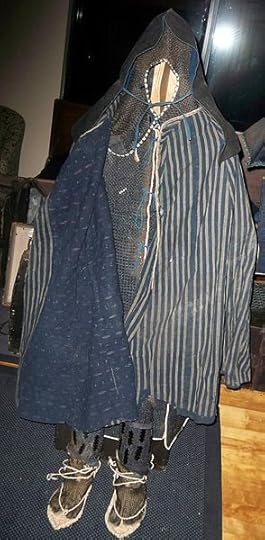 Ninja Warriors
Ninja WarriorsMyth: Ninja warriors dressed all in black.
Fact: That’s how the ninja—assassins and spies who relied on stealth—were first depicted on stage in Japanese plays; the black costumes were merely a symbol of their invisibility. That same black-clad ninja image was then transferred to the movies. In reality, the ninja donned dark blue outfits at night to blend in with the color of the night sky. In the daytime, preferring to blend in with the crowd, ninja would wear anything from peasant rags to noble gowns, depending on their mission.
Six Degrees of Separation
Myth: Every human is connected to every other human by “six degrees of separation.”
Fact: The concept is based on a 1967 study by Yale psychologist Stanley Milgram. His subjects, found via newspaper ads in the Midwest, were asked to locate complete strangers by sending letters to their own friends, asking if they knew the stranger. If they didn’t, the friends were asked to send the letters along to their friends, and so on, until one of the initial letters reached the stranger. It took an average of six steps, or “six degrees,” leading to the pop-culture phrase. It turns out the research was flawed. A 2002 follow-up study by psychologist Judith Kleinfeld of the University of Alaska found that Milgram’s original subjects were “particularly sociable” and, in truth, only about 30% of the strangers were found. Not only that, the average degrees of separation was nine, not six. Kleinfeld’s conclusion: We don’t live in a “small world,” as Milgram suggested—it’s more like a “lumpy oatmeal” world, in which a very few people are well connected, but most are not.
Schizophrenia
Myth: People who are schizophrenic have multiple personalities.
Fact: Schizophrenia is a mental disorder that causes people to have delusions about reality or experience auditory hallucinations (hear voices). People who suffer from multiple personalities have what is called “dissociative identity disorder.”
Jellyfish Sting
Myth: Urinating on a jellyfish sting will ease the pain.
Fact: While experts agree that running saltwater over a sting is better than freshwater (which will actually make it hurt more), just because urine contains salt doesn’t mean it helps. Why not?
The concentration isn’t nearly high enough. The best cure: time. The pain from the sting will subside in about 24 hours.
Goldfish
Myth: Goldfish only have a memory span of a few seconds.
Fact: We’ll take partial responsibility for this misconception (we published the fact in Uncle John’s Absolutely Absorbing Bathroom Reader). A recent study from Plymouth University in which goldfish were forced to press a lever for food showed that they not only have memory spans of up to three months, they also have built-in biological clocks that allow them to line up for food each day just before feeding time. Conclusion: Fish are smarter than we think.
The post Myth-conceptions appeared first on Trivia Books and Facts | Uncle John's Bathroom Reader.


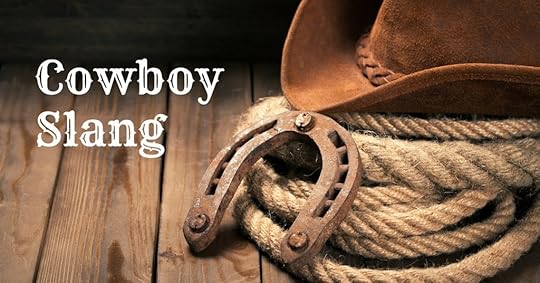


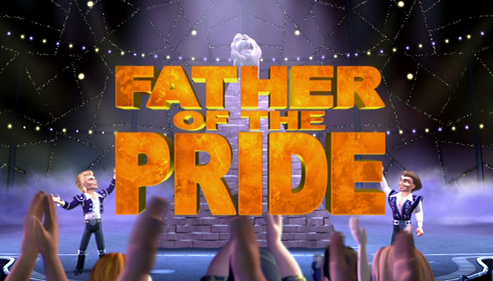
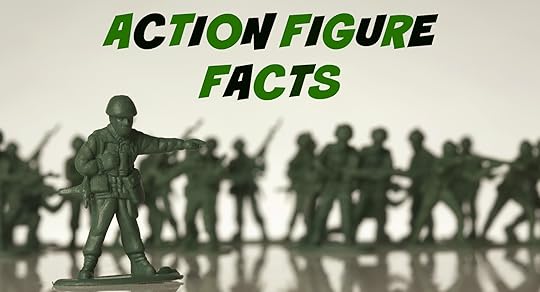

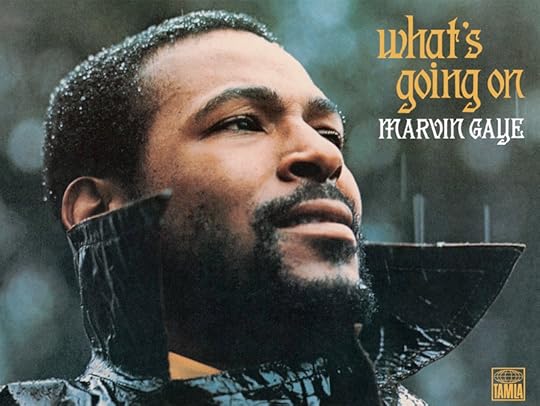 Trivia Books and Facts | Uncle John's Bathroom Reader
Trivia Books and Facts | Uncle John's Bathroom Reader




